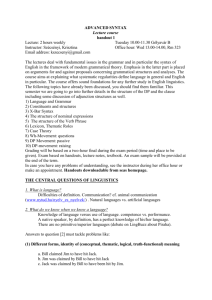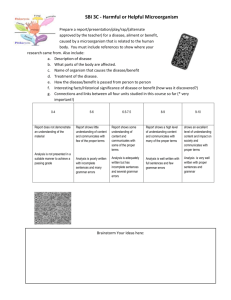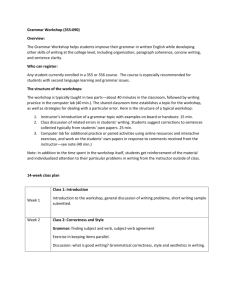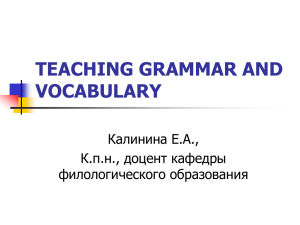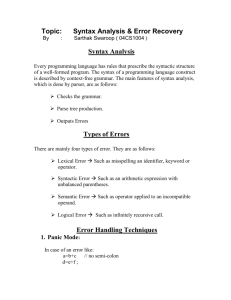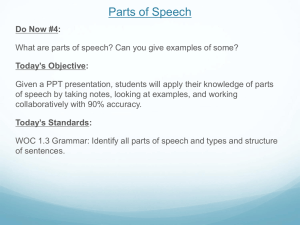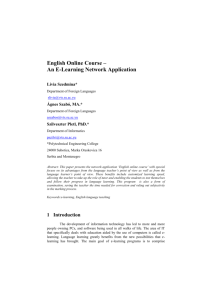English Syntax
advertisement
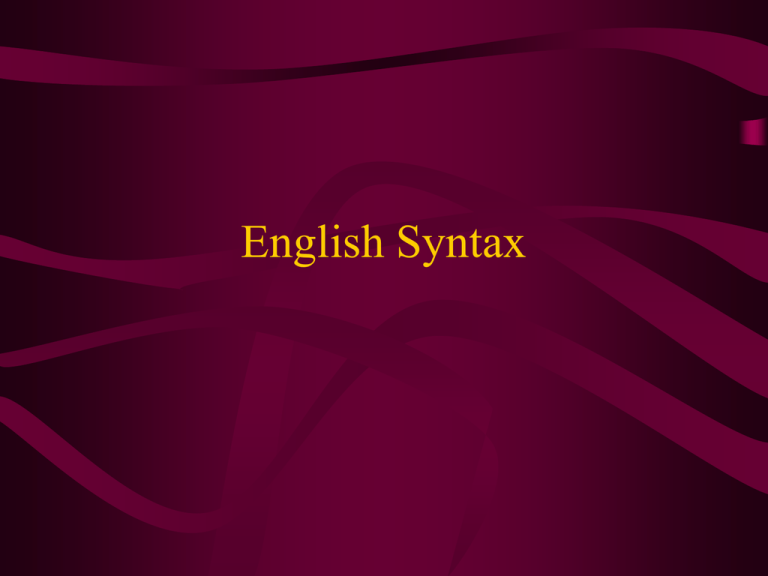
English Syntax Arguments against traditional prescriptive grammar teaching • L1 grammar is acquired without explicit instruction or corrective feedback • Students have difficulty learning and retaining concepts from traditional grammar • “There is no relationship between grammar study and writing” (Krashen) • “The teaching of formal grammar has a negligible or…even a harmful effect on the improvements of writing” (NCTE) • So why do we still teach grammar? Some arguments in favor of teaching grammar (from Larsen-Freeman) – Canadian French immersion programs – limited accuracy in French syntax and morphology – Less salient grammatical features or those not crucial for comprehension are not acquired – Self-reinforcing nature of peer interlanguage *”me llamo es” – Form-focused instruction converts “input” to “intake” – Destabilize an incorrect rule Descriptive grammar • Deep structure vs. surface structure – Structural ambiguity – Different structures of the same sentence • Order of words • Word categories • Grouping of words - constituents – Optional and obligatory constituents: NP (DET)-(Q)-(ADJP)N-(PP) – Recursivity: output feeds input: Potentially infinite sentences • Function of words/groups – [PP] – ADJ or A; [NP] – DO or IO • Dependency relationships • Hierarchical structure: tree diagrams Compound and complex sentences – relationship between parts of sentences • Writers begin with simple, then compound sentences and later learn to subordinate ideas • Subordinate clauses function as A, ADJ, N – A: “after, because, if” (describe when, where, why, how) – ADJ: “who, which, that” (follow N; restrictive/nonrestrictive) – N: “what, whatever, that” • Shortening complex sentences doesn’t make reading easier (?) • Sentence combining activities Reading • Word recognition view: – use semantic/ context clues to determine word meaning • Sociopsycholinguistic view: – use syntax as a cueing system to predict patterns • A phev was larzing two sleks – Make predictions based on word function • Go followed by locative (where) – Cloze activities Second language teaching: Audiolingual method • • • • Behaviorist view Patterned response drill Focus on specific grammar point Inductive: learn structures through drills, not explicit instruction of rules • Immediate error correction • Focus on form over meaning Second language teaching: Content-based methods • Language through content • ESL: academic reading challenges – Passive – de-emphasize the subject – Comparatives and logical connectors (if…then; not only…but also) – separated from each other – Modals – indicate subtle differences in meaning – VP with PP – additional information – Relative clauses – additional information • (p. 239 vs. p. 247)

